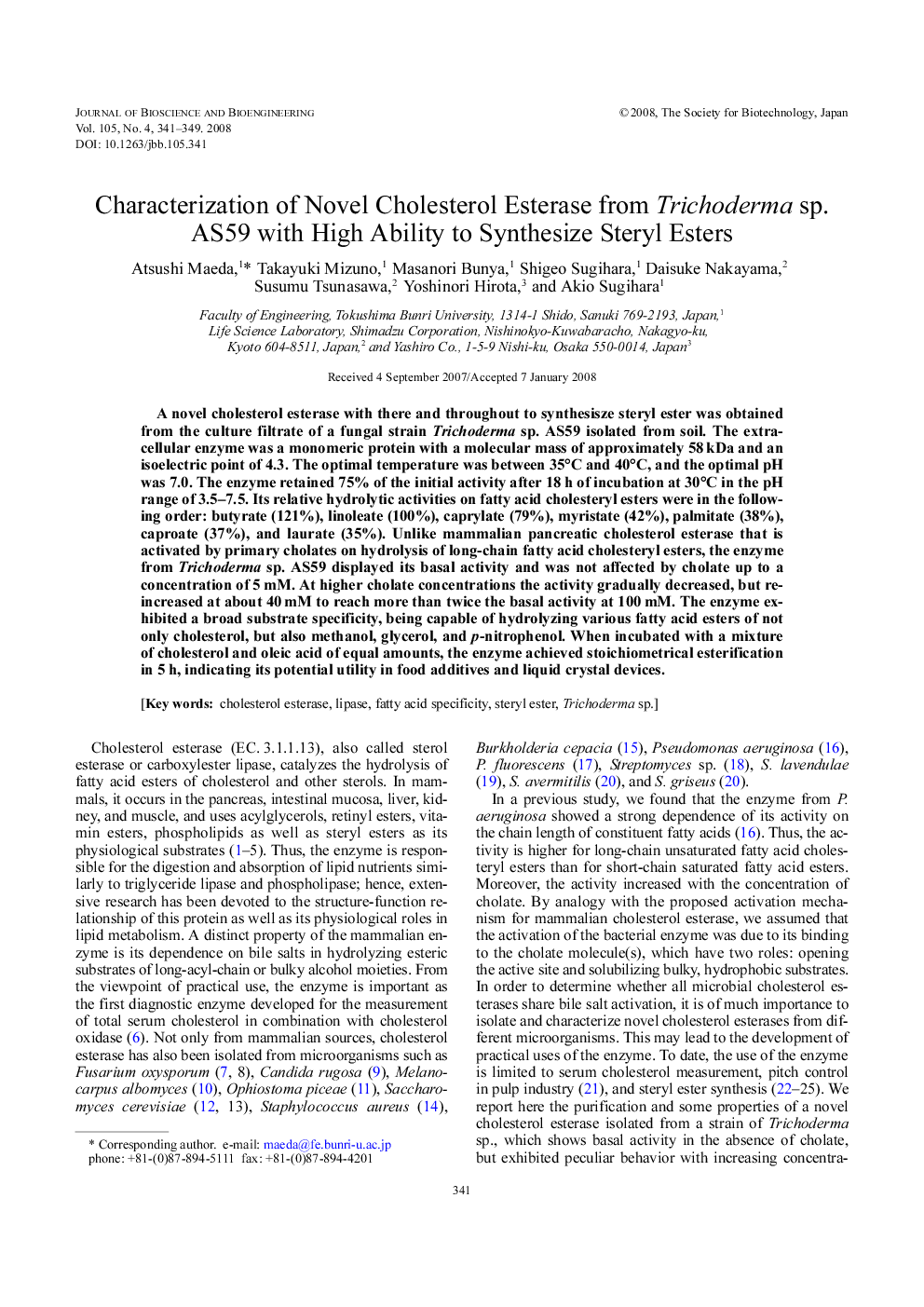| Article ID | Journal | Published Year | Pages | File Type |
|---|---|---|---|---|
| 21725 | Journal of Bioscience and Bioengineering | 2008 | 9 Pages |
A novel cholesterol esterase with there and throughout to synthesisze steryl ester was obtained from the culture filtrate of a fungal strain Trichoderma sp. AS59 isolated from soil. The extracellular enzyme was a monomeric protein with a molecular mass of approximately 58 kDa and an isoelectric point of 4.3. The optimal temperature was between 35°C and 40°C, and the optimal pH was 7.0. The enzyme retained 75% of the initial activity after 18 h of incubation at 30°C in the pH range of 3.5–7.5. Its relative hydrolytic activities on fatty acid cholesteryl esters were in the following order: butyrate (121%), linoleate (100%), caprylate (79%), myristate (42%), palmitate (38%), caproate (37%), and laurate (35%). Unlike mammalian pancreatic cholesterol esterase that is activated by primary cholates on hydrolysis of long-chain fatty acid cholesteryl esters, the enzyme from Trichoderma sp. AS59 displayed its basal activity and was not affected by cholate up to a concentration of 5 mM. At higher cholate concentrations the activity gradually decreased, but reincreased at about 40 mM to reach more than twice the basal activity at 100 mM. The enzyme exhibited a broad substrate specificity, being capable of hydrolyzing various fatty acid esters of not only cholesterol, but also methanol, glycerol, and p-nitrophenol. When incubated with a mixture of cholesterol and oleic acid of equal amounts, the enzyme achieved stoichiometrical esterification in 5 h, indicating its potential utility in food additives and liquid crystal devices.
